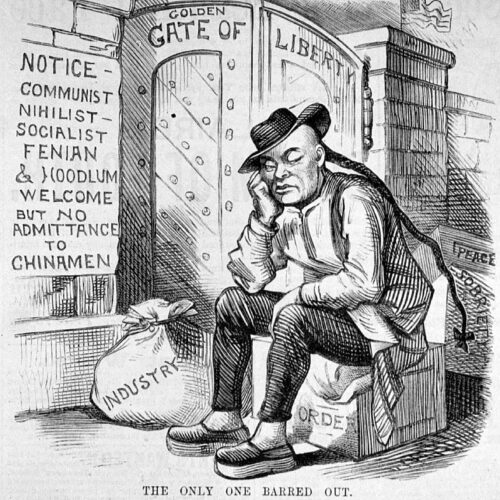Lessons
Come, Ye Wanderers: Waves of Jewish Immigration to the United States

State standards
Results
Length: 60-120 minutes | Grades: 6-12 | Themes: immigration, home and homeland
Lesson Overview
Jews have settled in North America since the 1600s, seeking safety and opportunity. Though diverse in background, they shared a desire for freedom, an ideal central to both America’s promise and its contradictions. Between 1880 and 1924, over 2 million Jews fled violence, poverty, and persecution to join a massive wave of global immigration to the United States. That movement was sharply limited by the Johnson-Reed Act of 1924, which restricted Jewish immigration until reforms in 1965 reopened doors to Jews from the Soviet Union, Iran, and beyond.
In this lesson, students explore waves of Jewish immigration to the United States, from the late 19th and early 20th centuries to more recent arrivals from Cuba, the Soviet Union, and Iran. They will consider personal ties to immigration, examine push-pull factors, and analyze poems, testimonies, and cartoons. The lesson ends with students writing a “Beginner’s Guide to America,” inspired by an Iranian Jewish immigrant’s version.
Enduring Understanding
The act of immigrating is one that individuals and communities undertake in order to escape multiple forms of vulnerability and disempowerment while seeking safety, security, and opportunity.
Throughout the 19th and 20th centuries, Jews from around the world have immigrated to and settled throughout the United States, in search of improved economic, social, and political conditions.
Essential Questions
What does it mean to be a member of a community?
Who are the Jewish people?
Learning Objectives
Students will be able to demonstrate an understanding of the reasons people decide to migrate to the United States through the examination of primary sources that illuminate multiple perspectives.
Students will be able to compare the experiences of multiple Jewish communities who immigrated to the United States in the 19th and 20th centuries from Central and Eastern Europe, the Soviet Union, and Iran.
Toolkit
-
Waves of Immigration lesson plan
-
Waves of Immigration slide deck
-
Waves of Immigration handout





